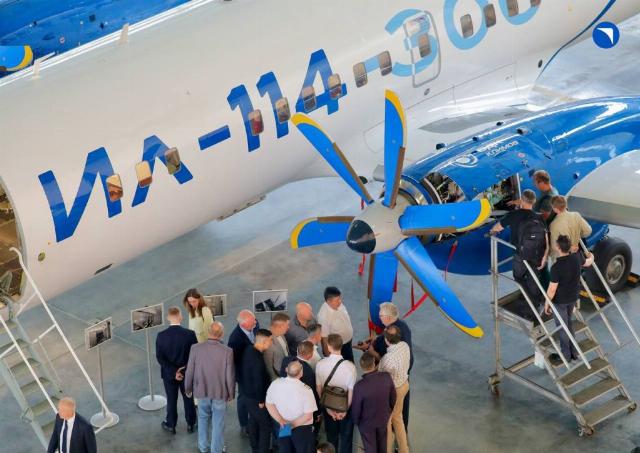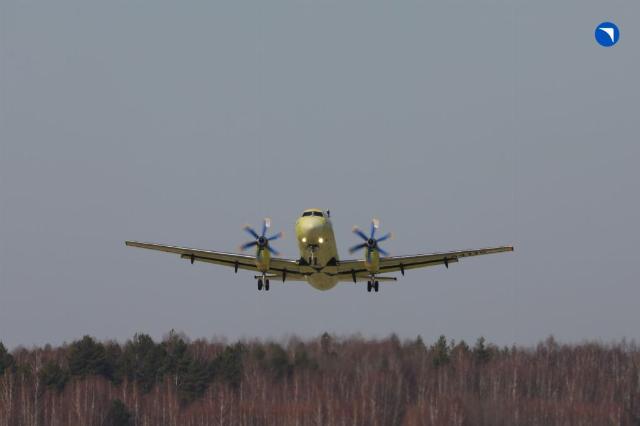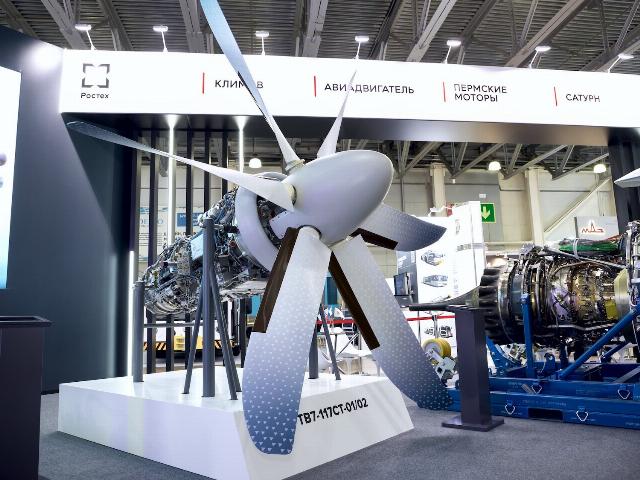About the design and advantages of turboprop aircraft engines
On March 30 of this year, the third prototype IL-114-300 passenger aircraft took off. The new machine has joined the flight test program of the domestic regional aircraft. The IL-114-300 was developed by PJSC Il United Aircraft Corporation in cooperation with leading domestic developers and manufacturers and consists exclusively of domestic systems and equipment. The "heart" of the aircraft is a pair of TV7-117-ST-01 engines manufactured by the St. Petersburg company ODK-Klimov, which is part of the United Engine Corporation. This engine belongs to the type of turboprop, or Theater of war.
It would seem that in our time of high speeds, supersonic and hypersound, such an engine is an anachronism and had to give way to more advanced power plants. But this is not happening. Yes, today the Theater of operations is not used as massively as it was back in the 1960s, but it occupies its niche in the aviation world firmly and deservedly.
We understand the design and advantages of turboprop aviation.
What is a Theater of operations
To understand the design of a turboprop power plant, let's compare it with another, more common type of gas turbine engines — turbojet (turbojet).
A turbofan engine is an engine that converts the energy of a burning fuel into a jet stream. In a simplified way, it consists of four parts: a compressor (in front of the flight), a combustion chamber (in the center), a turbine (behind, in front of the jet nozzle) and a jet nozzle. The working cycle of a turbofan engine is designed as follows: the compressor sucks in and compresses air, feeds it into the combustion chamber, where fuel is mixed with it, and the mixture ignites. Hot gases spin up the turbine, which rotates the compressor, and the remaining gas energy is converted into thrust by the jet nozzle.
As the history of aviation has shown, such an engine is very good for medium- and long-range aircraft. However, they become ineffective on local lines, and the main reason for this is increased fuel consumption. The high-speed performance of turbofan engines proved to be very useful for military aircraft — fighters, interceptors, bombers and missile carriers. Such engines were also suitable for medium- and long-haul multi-seat passenger airliners.
 |
| IL-114-300. |
| Source: UAC |
But in addition to these categories, there is a whole class of small, so-called regional aircraft designed for cargo and passenger transportation over relatively short distances. In addition, the military needed transport, patrol, reconnaissance, anti-submarine aircraft, as well as long-range missile bombers, for which the main criteria were not speed, but flight range, patrol time and maximum range. For these machines, the turboprop engine, or TVD, turned out to be the way out.
A rocket engine is an engine that converts the energy of a burning fuel into the mechanical operation of a propeller that creates thrust. In a simplified way, it consists of five parts: a gearbox, a compressor, a combustion chamber, a turbine and an output device. The operating cycle of a turbojet engine is similar to that of a turbojet engine, but the turbine also rotates the input shaft of the gearbox. In the gearbox, the rotational speed of the turbine shaft is lowered to the rotational speed of the propeller shaft, and the propeller mounted on it creates thrust to ensure the flight of the aircraft.
Pros and cons of turboprop engines
Like any engineering device and like any heat engine, a theater has its advantages and disadvantages. The advantage of turboprop engines is, first of all, lower specific fuel consumption compared to turbofan engines, that is, turbojet engines are more economical. Accordingly, hence the longer flight time of aircraft equipped with a theater of operations, the increased flight range and the longer range of their action. These qualities are in demand in long-range strategic, military transport, anti-submarine, and reconnaissance aircraft. The above qualities of the theater of operations make them preferable for installation on various types of UAVs, from reconnaissance to shock.
Another important quality of the theater is the best take—off characteristics of the aircraft on which they are installed, since the airflow from the theater propellers goes to blow the wing, since the propellers are located in front of the wing, as a result of which the lifting force of the wing increases. It should be noted that such qualities are necessary precisely for regional aircraft, which often use short runways, as well as for military aviation, since the runways of military airfields are one of the priority targets of the first strike.
 |
| IL-114-300. |
| Source: UAC |
As for the disadvantages of turboprop engines compared to turbojet engines, this is primarily a lower sustained flight speed than that of turbojet engines. Turboprop aircraft engines, unlike turbofan engines, operate only at subsonic speeds. This is due to the fact that the efficiency of the propeller decreases with increasing flight speed.
In summary, it should be noted that aircraft from the Theater of operations are preferable to use on regional routes characterized by low and medium passenger and cargo traffic on short runways, regardless of the degree of development of the airfield infrastructure. Moreover, due to the high efficiency of the theater, the range of distances covered by such aircraft can be very significant: from several hundred to thousands of kilometers.
A big advantage of the Theater of operations is also their lower demands on the cleanliness of the runway, and this is an important quality for a regional aviation aircraft.
To be continued...

